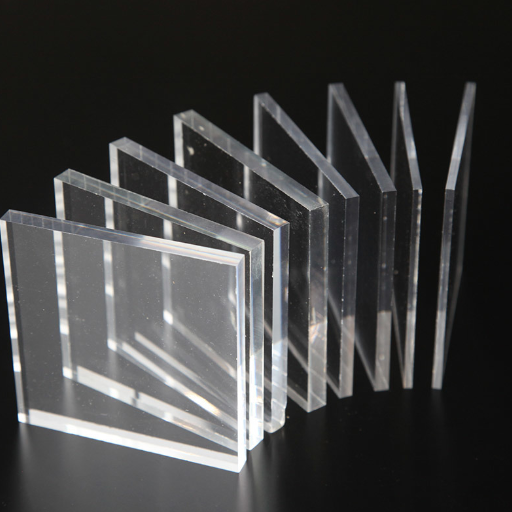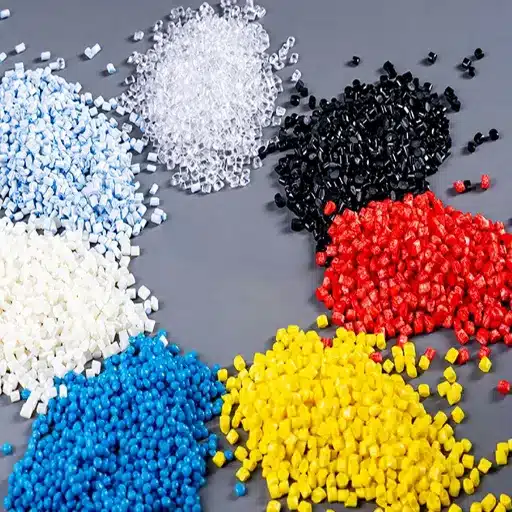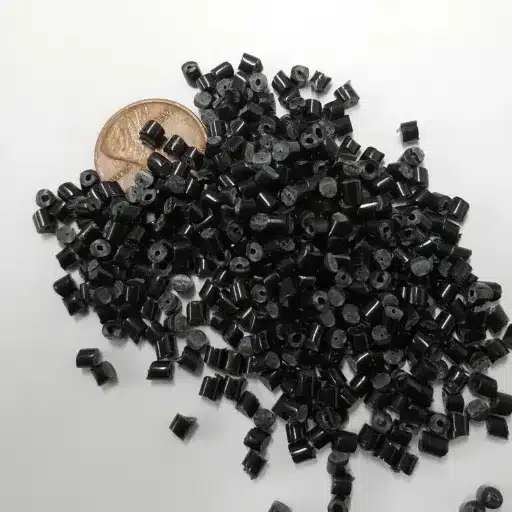Acrylic sheets are renowned for their clarity, versatility, and resistance to weather, which makes them a potentially valuable application in home design or industrial use. However, one of the most common concerns regarding the use of acrylic is the yellowing process, which can then compromise its beauty and application. So, what causes the yellowing, and, more importantly, how can you prevent it from happening? The article presents a thorough examination of the factors that impact acrylic longevity, ranging from UV exposure to material quality, with suggestions for maintaining the beauty of your acrylic sheets for many years to come. Whether you’re a designer, builder, or DIYer, these points can help you get the most out of this versatile material and make it last for years to come.
Understanding Acrylic and Its Properties
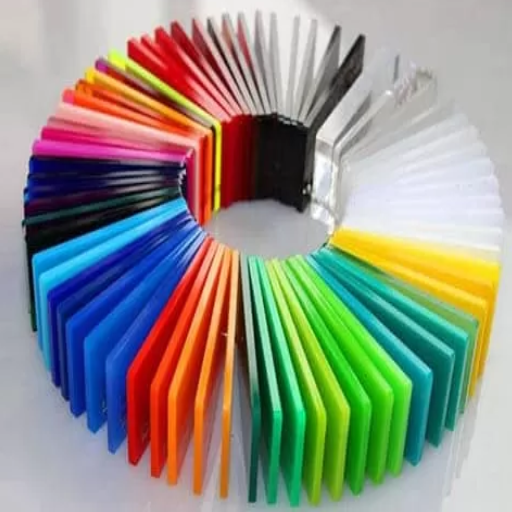
What is Acrylic and Its Uses?
Acrylic is also called polymethyl methacrylate, or PMMA for short. It is one of those fine thermoplastics that are lightweight, durable, and highly versatile. Transparent like glass, except with improved impact resistance, it satisfies two demands: looks and utility. Acrylic sheets are used in retail display counters, store signs, aquariums, windows, shelters, and for lighting.
Distinguishing acrylic from others is the “adaptable” property. It can be cut, shaped, and formed into intricate designs, offering endless artistic possibilities. The weather-resistant qualities of acrylic are ideal for outdoor purposes, as materials cannot endure exposure to UV rays and extreme weather conditions without becoming discolored or degrading. With the constant advancement of acrylic technology, however, new types of acrylic with UV resistance and anti-scratch coatings are being developed, allowing the use of acrylic in adverse environments.
Reclaiming acrylic has made it popular and in tune with sustainable manufacturing techniques. These properties make it indispensable in the fields of architecture, interior design, automotive, and even medical applications where precision and performance are paramount. Its vast applications underline its importance in modern innovation, meeting both functional needs and creative desires.
Differences Between Acrylic and Plexiglass
They are often used synonymously; however, an argument can be made to support that minor distinctions do indeed apply. Acrylic is a generic term describing a family of synthetic substances derived from acrylic acid or related compounds, and Plexiglass is a trade name for acrylic sheet sold commercially. Both possess similar qualities of clarity, durability, and impact resistance, but may exhibit minor differences in manufacturing processes, applications, and performance capabilities.
The manufacturing constitutes the primary difference. Acrylic sheets may be made by extrusion or cell casting. Extruded acrylic typically costs less and, due to its uniform thickness, finds widespread applications in signage and display cases. Conversely, cell-cast acrylic, popularly known as Plexiglass, offers better optical clarity, scratch resistance, and durability, hence being preferred for high-quality precision projects such as aquariums or medical devices.
In terms of costs, extruded acrylic is less expensive than Plexiglas, primarily due to its more straightforward production process. However, when performance under particular stress or environmental conditions is a crucial consideration, using Plexiglass will justify the additional expense. Additionally, Plexiglass sheets are typically designed with maximum UV resistance to maintain clarity and durability over time when exposed to outdoor conditions.
When choosing between acrylic and Plexiglass, it is often a matter of considering specific project details, such as aesthetic preferences, environmental exposure, and budget availability. Both are lightweight and shatter-resistant alternatives to glass, but their qualities make them suitable for different needs.
Composition of Acrylic Sheet
An acrylic sheet is primarily composed of PMMA, a transparent thermoplastic used due to its strength, clarity, and lightweight nature. PMMA is manufactured through a polymerization process in which the methyl methacrylate (MMA) monomer is chemically converted into polymer chains with a reasonably durable nature. This particular composition offers acrylic sheets a good resistance against impact, weathering, and UV rays, proving it to be a diverse and probably longer-lasting material.
By way of example, additives are introduced during acrylic production to modify the sheet, imparting properties such as scratch resistance, colorfastness, or flexibility to the acrylic sheet. Some acrylic sheets have a glare-resistant or anti-static coating or layer, which allows them to be used for their special purpose. In this way, acrylic sheets have found applications in industries such as building, interior design, basic automotive, and optical, welcoming all with the varying formulations possible to suit a wide variety of requirements without compromising quality and performance.
Factors Contributing to Acrylic Yellowing
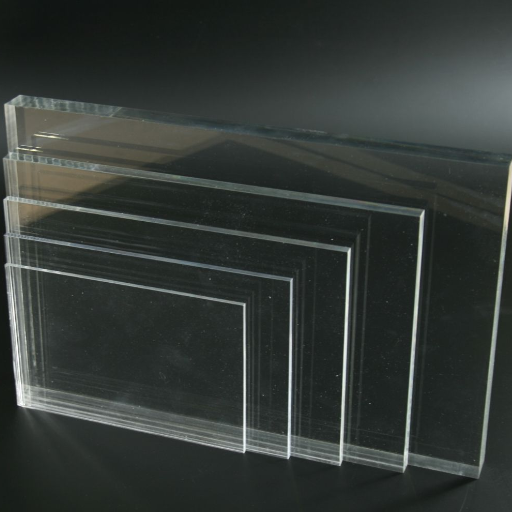
UV Exposure and Its Effects on Acrylic
Another essential reason behind the yellowing of an acrylic is long-term exposure to ultraviolet rays. The ultraviolet rays cause a photochemical reaction within the acrylic material, slowly breaking down the molecular structure. This discoloration process manifests as a yellowing stain, further reducing the mechanical strength. It has been studied and proven that continuous UV exposure accelerates the aging process, particularly in outdoor environments where materials are subjected to direct sunlight.
Conversely, many acrylic goods have been treated with a protective UV coating or with additives added during the manufacturing process to stave off these effects. This coat acts as a filter from the opposing UV rays, which would otherwise enter the material through it. High-performance, UV-stabilized acrylics have been proven to remain clear and strong for significantly longer than untreated acrylics. To keep acrylic maintainable for long periods, regular cleaning using non-abrasive products and avoidance of harsh chemicals when cleaning is recommended.
Environmental Factors Affecting Clear Plastic
Transparent plastics are incredibly versatile, but their technical properties vary when discussing degradation in daylight, which mainly depends on the in-use conditions of plastics and also on their actual physical properties and compositions. Apart from these, extreme temperature fluctuations can be highly detrimental, causing various polymeric materials to warp, crack, or simply lose clarity with age. Materials, in particular, suffer from thermal degradation when kept in heat conditions for an extended period and, thus, become either brittle or discolored.
Moisture and humidity are other worthy considerations. Persistent exposure to excess moisture can precipitate hydrolytic degradation in certain plastics, altering their molecular structure and creating a defective surface. Coupled with temperature changes, it may even exacerbate their abrasion or wear, thereby undermining the material’s strength.
In a way, this might be considered an environmental factor, as well as an impact on adjoining industries. Exposure to corrosive chemicals, such as airborne particulates or acidic dye imitations, could initiate a chemical reaction on the surface of transparent plastics, thereby reducing optical clarity and strength. For instance, sulfur dioxide or nitrogen oxides can lead to a chemical reaction that results in slight etching or glazing effects on plastic over time.
To mitigate most environmental stresses, modern plastics are made with advanced stabilizers and coatings that confer resistance against thermal, moisture, and chemical exposure. These advances have been indispensable in automotive components, greenhouse glazing, electronic enclosures, and so forth, where hostile environmental conditions prevail. By understanding these factors and implementing measures, industries can ensure that transparent plastics maintain their performance and durability over a long service life.
The Role of Additives in Acrylic Yellowing
Additives play a significant role in determining the color stability and durability of acrylic materials. Some additives, such as UV stabilizers and light absorbers, are added to reduce ultraviolet radiation rays, which constitute one of the major causes of Yellowing. The stabilizers absorb the UV rays and dissipate them as heat, thereby shielding the polymer matrix from degradation. However, an imbalance in the action of additives and environmental parameters, such as temperature, relative humidity, and pollution, may sometimes accelerate the discoloration of the material.
It has been experimentally verified that the concentration and composition of additives greatly influence the yellowing of acrylic with age. For instance, HALS are said to be most effective in counteracting photodegradation, while antioxidants act to reduce thermal oxidation. Thus, upon continued exposure to intense UV rays or heat, these defensive treatments become overwhelmed, and the additives decompose, causing visible yellowing. Today, manufacturers continue to fine-tune their additive templates to strike a balance between protection and enhanced performance, ensuring that acrylics remain clear and aesthetically appealing for an extended period.
Preventing Acrylic from Turning Yellow
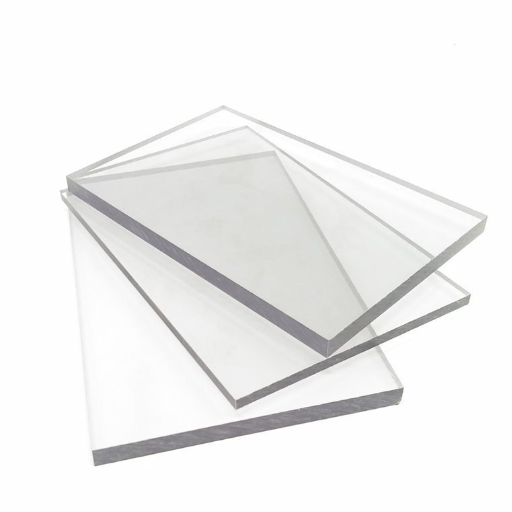
Choosing UV-Resistant Acrylic Sheets
When selecting UV-resistant acrylic sheets, it is essential to evaluate their quality based on the material composition and performance criteria. A high-quality UV-resistant acrylic sheet is designed to resist the harsh ultraviolet rays by incorporating either additives into the resin or applying a coating that prevents discoloration and degradation of the material over time. These sheets generally permit excellent light transmission, with the usual figure being above 90%, which helps keep them intact during long periods of sun exposure.
Another factor to think about is the type of climate it is situated in. Advanced UV blocking must be supplied to protect the acrylic in areas with intense sunlight, as this can significantly degrade surface clarity and potentially cause the sheets to harden. Certifications concerning testing, like ISO4892-2 (exposure to UV light), can be a good means to judge the UV-resistance performance of the material.
Before settling on a product, always compare warranties and lifespan claims. All manufacturers offer guarantees ranging from 5 to 15 years for UV-resistant acrylic sheets, ensuring consistent quality. Compare these with many other factors to select sheets that appear attractive and provide long-term protection.
Protective Coatings and Varnishes
Protective coatings and varnishes are recommended to enhance the strength and performance of UV-resistant acrylic sheets, depending on the specific application. The latest coatings offer improved resistance to degradation caused by UV rays, thereby reducing the risk of yellowing, cracking, or surface deterioration over time. Such high-performance coatings typically combine all or some of the following features: anti-scratch, hydrophobic, water-repellent, and anti-reflective, which enhance clarity and attractiveness.
Therefore, acrylic UV coatings are traditionally grouped under this category. These are best suited for applications over acrylic sheets because they provide the best optical clarity. They can keep the sheet completely transparent while extending its life for years. Another option includes polyurethane varnishes, which are considered best for resisting abrasion and weathering.
Using a heat-reflective coating outdoors reduces thermal expansion and, consequently, the redirection of the acrylic sheet due to continuous exposure to sunlight. Testing standards established themselves as ASTM D882 in terms of resistance to weathering effects, further ensuring the efficiency of these coatings in a high-UV environment.
Always select environmentally sensitive treatments and products that are certified as sustainable by some agency. More manufacturers are now offering low-VOC (volatile organic compound) formulations as a means of reducing environmental impact with no sacrifice to performance. Such products complement maintenance and extend the life expectancy of your acrylic sheets, preserving their aesthetic and functional integrity for years.
Best Practices for Maintaining Acrylic Longevity
The longer-lasting appeal of an acrylic sheet is influenced by how well it is cared for. To prevent surface scratches and dust, clean the surface regularly using a soft lint-free cloth and very mild detergent, which is non-abrasive. Never use harsh cleaners, such as those containing ammonia. Such substances may induce tiny microcracks or permanently discolor the sheet. For heavy dirt, gently clean the surface with warm water without hard scrubbing to avoid permanent damage.
UV-blocking coatings serve as very efficient preventive measures against ultraviolet degradation, since it causes base and yellowness in the material. Additionally, storage in ambiently cool and dry environments reduces the potential thermal expansion and contraction activities that may compromise its structural integrity. For outdoor applications, UV resistance and weatherproofing are added to acrylics to enhance durability, ensuring longer life performance.
Finally, during installation or transport, good care of acrylic sheets is essential. Using edge protectors and avoiding sharp objects near the surface prevents chipping and scratches. Combining all of the above-mentioned conventional systems with the manufacturer’s cutting-edge products and materials will keep acrylic sheets clear, strong, and in fine shape for considerably longer.
Comparing Acrylic with Other Plastic Materials
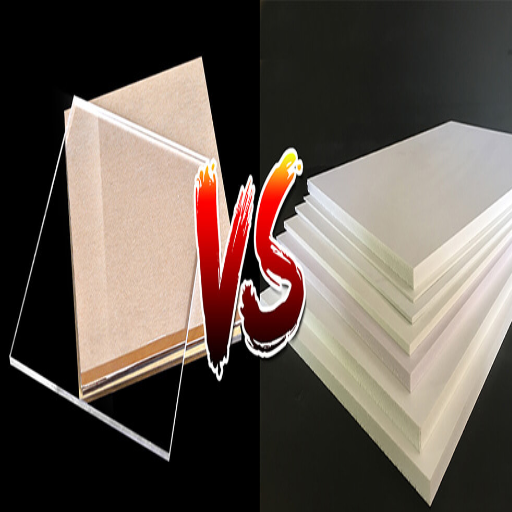
Acrylite vs Acrylic: The Better Choice?
In the case of Acrylite and acrylic, it is essential to understand that Acrylite is a branded acrylic product treated to specific manufacturing standards and features. Both materials essentially share the same properties; durability, optical clarity, and versatility may be the distinguishing factors.
It is said that Acrylite offers the best surface quality and resistance to the effects of aging and yellowing. Compared to generic acrylics, Acrylite has a relatively higher UV resistance and can thus be used outdoors for glazing, signage, or greenhouses. Additionally, Acrylite undergoes rigorous quality controls that ensure a consistent thickness and finish, which can be vital when utmost precision in size is required.
Standard acrylic sheets may be cheaper and hence find use in everyday applications such as interior design projects, craft work, or display cases. They offer better clarity and strength as well. Still, generic acrylic may develop some minor and superficial surface imperfections or irregularities during the manufacturing process when compared to premium-grade acrylic materials, such as Acrylite.
It all comes down to the project’s needs when choosing between Acrylite and standard acrylic. Consider Acrylite for projects that require durability over time, weather resistance, and good optical clarity. Conversely, where price is a limiting factor or for relatively less demanding applications, generic acrylic may suffice while providing sufficient versatility. When selecting the material, striking a balance between performance requirements and cost will yield the best application fit.
Rental of Other Plastics under UV Exposure</p>
UV resistance of plastics varies according to their composition and additives. For example, polycarbonate materials, which are suitable for cleaning and machining operations due to their high impact resistance, often develop yellowness after prolonged UV exposure unless treated with UV stabilizers or coatings. PVC, which is commonly used in outdoor applications such as pipes or siding, theoretically performs better against the direct effects of UV light but can become brittle if not stabilized.
Conversely, HDPE exhibits excellent UV resistance, which often means it is pigmented with carbon black to maximize the blocking of detrimental light wavelengths. Another contender is acrylic; it enjoys popularity due to its clarity and natural UV resistance, making it suitable for applications that require prolonged UV exposure. Adding UV inhibitors has become a common practice in plastic manufacturing to provide long-term durability and resilience to materials situated in outdoor environments. The choice of plastic for use against UV exposure largely depends on the expected lifespan, structural requirements, and environmental conditions.
Applications of Non-Yellowing Plastic Sheet
Non-yellowing plastic sheets have vital applications in a myriad of industries due to their durability, optical clarity, and UV resistance. One of the most prominent applications pertains to architectural design, where these sheets are used in skylights, windows, and greenhouse panels to ensure that the edifices retain their aesthetic appeal and utility over time. Furthermore, these are also extensively used in sign and display manufacturing, thereby conferring a long life of clarity and brightness to external advertisements and branding.
The automotive and transportation world utilizes non-yellowing plastics in headlights, windshields, and protective barriers to achieve performance standards and reliability during prolonged exposure to sunlight. Furthermore, materials suitable for use in marine environments are available, as UV intensity and aging are significant concerns. In non-yellowing materials, boat windshields, instrument panels, and protective covers offer resistance to discoloration and structural degradation.
Finally, the field of solar technology has been a growing highlight for these materials, serving as protective layers for solar panels. Their ability to remain transparent and strong throughout years of exposure to UV rays ensures maximum energy gain and longevity of the system, as well as the versatility and strength of non-yellowing plastic sheets, making them indispensable in modern inventions and designs.
Conclusion: Ensuring the Durability of Acrylic Sheets
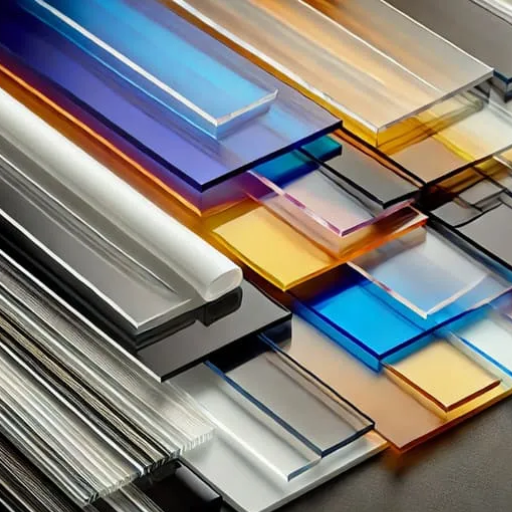
Key Points Summary
In conclusion, the non-yellowing plastic sheets, including acrylics, are a center of attraction for several industries due to excellent properties of durability, optical clarity, and resistance to UV-induced yellowing. This material becomes particularly useful in applications where long-term visual impact and structural integrity are considered, such as in architectural applications, protective barriers, and energy-efficient windows. The plastic sheets can remain aesthetic and functional by subjecting them to various environmental stressors such as sunlight, weather changes, and heavy impacts.
From a sustainability and efficiency vantage point, they are immensely crucial to solar energy systems. The non-yellowing plastic sheets provide transparent shielding for the photovoltaic panels against long-term UV degradation, ensuring the panels maintain full effectiveness over time. Thus, performance-wise, it is justified; and cost-wise, they last in use, guaranteeing fewer replacements and aiding the generation of power from cleaner solutions. I find no end to my awe for these materials with their versatility set against the backdrop of resilience, an amalgamation of technology emerging from pure engineering that makes them a must-have in all walks of life today, from construction to renewable energy and beyond.
Future Trends in Acrylic Technology
One of the most promising future developments in acrylic technology is the innovative acrylic material. I am fascinated by how advanced coatings can respond to temperature or humidity changes, thereby realizing dynamic functionality in various applications. Consider acrylic panels that can self-adjust their opacity to control the incoming light or integrate sensors to track structural health in real-time—these applications would truly transform the landscape of acrylic use in residential and industrial environments alike.
Another promising area of progress is what we refer to as sustainable acrylic production. The bio-based or fully recyclable acrylic approaches are effectively gaining momentum, in an attempt to mitigate the environmental impacts associated with its classic form of production. If any developments can reduce these impact factors, then we are really on the case, because this aligns perfectly with the global push toward circular economies. The notion of eco-friendly, high-performance acrylics being used wherever possible, whether in architecture or the automotive industry, excites me because it represents a marriage of innovation and environmental consciousness.
Then, acrylic is another area where nanotechnology can be exciting for me: acrylic implications with materials beyond the nano scale will offer greater strength, flexibility, and nanotribological coatings to prove antimicrobial characteristics. These advancements could certainly prove beneficial in fields like healthcare, where everyday materials must withstand the rigors of the working environment and maintain hygiene. My view is that the future of acrylic technology holds endless possibilities, with smart designs that cater to sustainability and cutting-edge science, meeting the dynamic needs of the world.
Final Thoughts on Acrylic Care
Proper acrylic care is quintessential in maintaining its longevity, beauty, and functionality. In my experience, one of the most critical factors in caring for acrylic glass is cleaning it regularly with non-abrasive cleaning materials. Mild cleaners should always be chosen to prevent the surface from getting scratched or damaged. Typically, warm water and mild soap, combined with a soft microfiber cloth, should be sufficient for wiping away dirt and fingerprints. The acrylic also needs to be protected from exposure to harsh chemicals and solvents because it will cause gradual degradation.
I take another tip seriously—that is, to avoid physically damaging the acrylic objects by treating the items with care and never being excessively forceful. When the acrylic surfaces do get scratches, however, using a polishing kit, as I have experienced, has been known to restore almost all of their perfect clarity and shine. I have also found reinforcement of the material with a protective film or coating to be very useful, especially in areas of heavy wear and tear or outdoors.
Ultimately, I view that considerate care not only nurtures an acrylic’s appearance but also its performance across various applications. By adhering to a consistent and straightforward maintenance routine, I have extracted maximum life and use out of acrylic items, as versatile and reliable as they are innovative.
Reference Sources
-
Will Acrylic Varnish Turn Yellow Over Time? – Reddit
Discusses the slow and minimal yellowing of acrylic varnish and paint over time. -
How Do You Prevent Yellowing or Discoloration of Acrylic – Jinbao Plastic
Explains photodegradation caused by UV rays and offers prevention tips. -
Does Acrylic Become Yellow Over Time? – Bark Frameworks
Addresses the minimal yellowing of acrylic and its historical behavior under exposure to light. -
Does a Clear Acrylic Box Turn Yellow Over Time? – Jayi Acrylic
Highlights UV radiation as a primary cause of yellowing and factors affecting its speed. -
Causes & Prevention of Yellowed Plastics – SpecialChem
Explores the degradation of polymer chains due to UV light, oxygen, and heat. - View Plastic Pellets Manufacturers in China
Frequently Asked Questions (FAQs)
Does acrylic yellow with time due to UV exposure?
Acrylic tends to yellow over time, especially when exposed to ultraviolet rays. The extent to which yellowing occurs might depend on the type of acrylic. Thus, a standard acrylic has less UV resistance than special formulations, such as Acrylite®, meant to resist yellowing. The duration of exposure to sunlight and the intensity of UV rays are also significant factors. For utmost prevention of yellowing, it is recommended to use UV-protected acrylic sheets for display cases or outdoor applications.
How do cast acrylic and standard acrylic differ in yellowing?
It is well known that cast acrylic offers superior optical clarity and UV resistance compared to standard acrylic. Both types tend to uplift yellow hues due to ageing, and the cast acrylic is almost on the verge of disintegrating. This makes it particularly suitable for most critical applications that require long-term clarity. Because cast acrylic can be extruded into many thicknesses, it gives greater flexibility in design. Thus, cast acrylic is generally the better choice when the project involves long-term exposure to sunlight.
Can acrylic paint play a role in the yellowing of acrylic surfaces?
Yes, the type of paint applied will influence yellowing on an acrylic surface. Oil and alkyd-based paints are more prone to yellowing with age than water-based acrylic paints. When painting on acrylic sheets, it is best to use acrylic paints specifically designed for plastic surfaces. Proper upkeep and cleaning are essential for maintaining the clarity and finish of the printed acrylic. Polishing may help to restore some clarity if yellowing occurs, but it will not delete the discoloration.
How do I stop my acrylic sheet from turning brown?
The brown color in acrylic results from exposure to sunlight. Acrylic sheets yellow on prolonged exposure to UV light; thus, limiting exposure is essential to prevent this. UV-resistant acrylic sheets practically minimize the chances of yellowing. Keeping the surface clean with a mild solution, such as a mild soap and water, also helps reduce any discoloration. Avoid using aggressive cleaning methods that can scratch the surface, as these scratches may harbor impurities, leading to further discoloration. Proper storage away from any light source is also advised.
What effect does prolonged exposure to UV light have on acrylic?
Acrylic materials, when prolongedly exposed to UV light, undergo degradation in their properties, resulting in the development of yellow discoloration and haziness. Such discoloration can impart an unpleasant appearance and continue to compromise the mechanical strength, making such levels of acrylic unsuitable for use in any purpose classified as crucial. UV-resistant acrylic, for example, Acrylite®, is designed to resist such exposures. Where UV exposure is unavoidable, UV inhibitors can be incorporated within the formulation of acrylic to counteract its effect. Regular inspections and maintenance counteract any changes in clarity.
Are there any alternatives to acrylic that resist yellowing?
Yes, there are a handful of alternatives to standard acrylic that resist yellowing; among these, a few are polycarbonate and PETG. Polycarbonate, with impact resistance and optical clarity, is often used where durability is a requirement. PETG is a clear plastic that provides excellent UV resistance and is thus less prone to yellowing with time. Both materials come in various colors and can be used for applications much like acrylic, including display cases and protective glazing. When you are selecting one of the good alternatives, however, be sure to consider the specifications for your project so that the resulting solution serves you well in the end.

